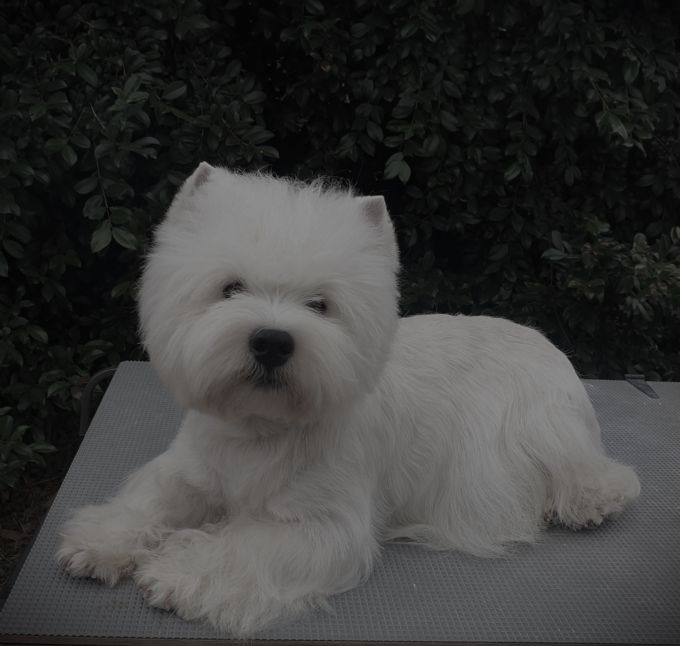The West Highland White Terrier

Originally bred to rid Scottish farms of foxes & badgers, the Westie is now a family favorite.
The West Highland White Terrier or Westie, as its if affectionately known was first shown in Crufts in 1907. The first straind of the breed are attributed to Coloned ED Malcolm of Argylshire, Scotland.Considered the founder of the breed , he bred a kennel of whiter terriers so that they could be seen from a distance whitle hunting, and called them "Polltalloch" after his family seat.
Several other small white terriers were also bred at the time, such as those bred by George Clarke that were named "Roseneath", after the fmily seat of the Duke of Arygll. This white terriers were kept on many Scottish farms, and were used to fulsh out foxes and badgers.
At the end of the 19th Century, the small white terriers were regards as beign of the same breed. Eventually they were all grouped under the same banneras West Highland White Terriers for Kennel Registration.
APPEARANCE
Neat & compact with piercing eyes, black nose, pricked ears, a harsh outer coat & a soft undercoat. Westies only come in one color-white. Strongly built deep in chest and back ribs. Level back & powerful quarters on muscular legs exhibiting a great combination of strength & activity. They are approximatley 28cm in size in height & weigh between 7-10kg,
MAINTENANCE
If a westie is shown in Conformation, its coat should be stripped to ensure it stays coarse. A pet Westie can be clipped, and daily brushing will encourage the natural oils to maintain the coat's heath.
SUITABILITY
This breed fits in with morst families & is suitable for single and elderly people. They love spending time with thier owners & especially love children. Regular exercise & stimulation are a must for this very outgoing breed. They can get very bored, so need to be kept entertained with plenty of toys & games.
SKIN, HEALTH & DISEASES
The Westie dog breed, which has an average lifespan of 12 to 14 years, may be prone to minor health problems and major problems such as Legg-Perthes Disease, Craniomandibular Osteopathy (CMO), globoid cell leukodystrophy, and skin problems if not fed correctly. Some skin related problems can be from environments where some westies might get allergies to certain grasses or plants, or from food realated issues. Best to consider your vet or breeder if a problem arises to source the issue.
